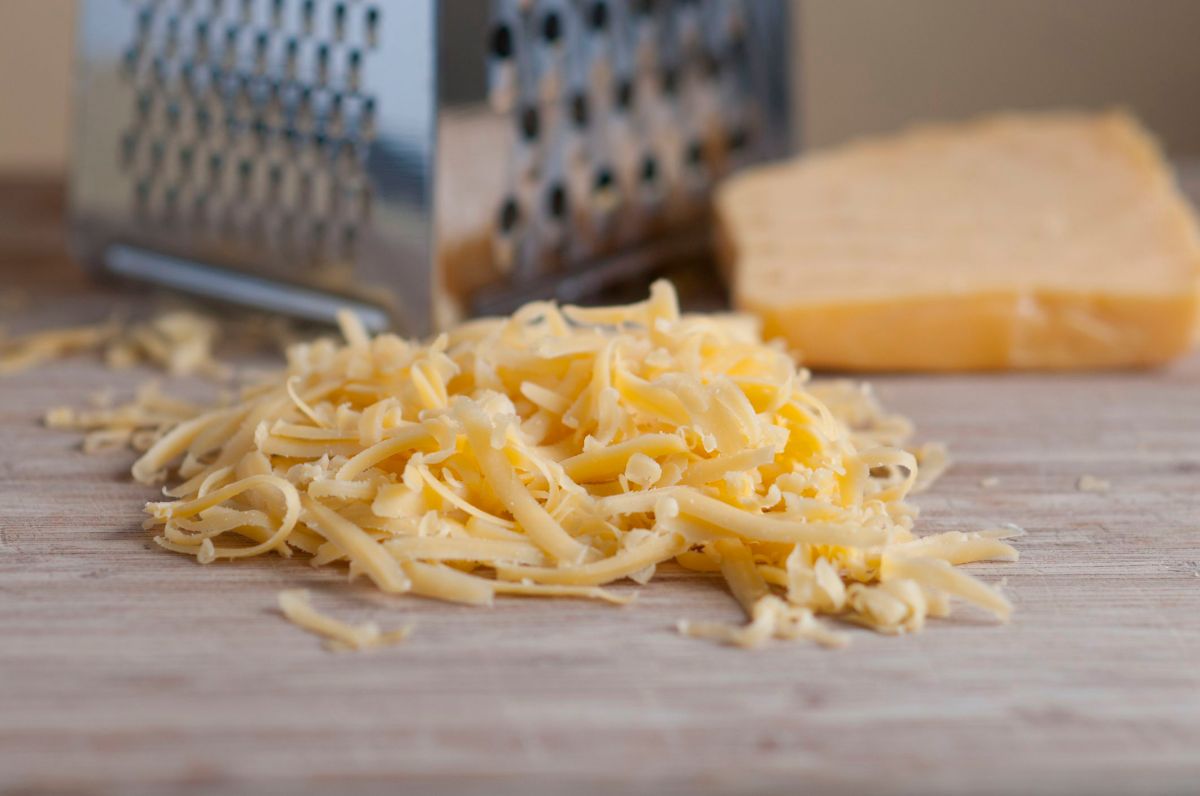Craving creamy, cheesy goodness without the dairy? This collection of flavor-packed dairy-free recipes proves that deliciousness and ethical or health-conscious choices aren’t mutually exclusive. Imagine vibrant, richly-hued dishes bursting with unexpected flavor combinations – from a cashew-based “cheddar” that melts perfectly to a surprisingly authentic mozzarella alternative. We’ll explore the world of dairy-free cheese alternatives, unveiling the secrets to creating dishes that will even convert the most devoted cheese aficionado. Prepare to tantalize your taste buds and expand your culinary horizons.
We’ll delve into three unique recipes, each showcasing a different cheese profile and highlighting the versatility of plant-based ingredients. Detailed instructions, ingredient substitutions for various dietary needs, and visual plating suggestions will ensure your success in creating stunning, flavorful meals. We’ll even walk you through a step-by-step guide for creating a luxuriously creamy vegan mac and cheese, a crowd-pleasing classic reimagined for a dairy-free lifestyle.
Dairy-Free Cheese Alternatives
The creamy allure of cheese, a staple in countless cuisines, is undeniable. However, a growing number of people are seeking delicious dairy-free alternatives, driven by dietary restrictions, ethical concerns, or simply a desire to explore new flavor profiles. This surge in demand has spurred innovation in the plant-based food industry, resulting in a vibrant array of dairy-free cheeses that rival their traditional counterparts in taste and texture. This exploration delves into the world of these exciting alternatives, highlighting their benefits and diverse flavor landscapes.
Dairy-free eating offers numerous advantages. For those with lactose intolerance, it eliminates digestive discomfort and bloating. Beyond individual health, choosing dairy-free options can contribute to a more sustainable and ethical food system. The dairy industry has significant environmental impacts, including greenhouse gas emissions and water usage. Plant-based cheeses often require fewer resources to produce, leading to a smaller carbon footprint. Furthermore, many consumers are drawn to the ethical considerations of animal welfare, finding solace in cruelty-free options.
Types of Dairy-Free Cheeses and Their Flavor Profiles
The world of dairy-free cheese is surprisingly diverse, offering a spectrum of textures and tastes to satisfy any palate. Cashew-based cheeses often boast a creamy, smooth texture, lending themselves well to creamy sauces or spreads. Their mild, nutty flavor makes them versatile accompaniments to various dishes. Coconut-based cheeses, on the other hand, can offer a richer, more intensely flavored experience, sometimes with a slight coconut undertone. These are particularly well-suited for applications where a stronger flavor is desired, such as in a vegan quesadilla or a rich pasta sauce. Almond-based cheeses frequently present a slightly firmer texture, often mimicking the crumbly consistency of certain hard cheeses. Their subtle, slightly sweet flavor profile makes them ideal for grating or using in dishes where a less intense flavor is preferred. Soy-based cheeses, frequently used in vegan processed cheeses, can offer a surprisingly close approximation to the melt and stretch of traditional cheeses, making them popular for grilled cheese sandwiches or pizza toppings. Finally, many manufacturers utilize a blend of nuts, seeds, and other plant-based ingredients to achieve unique flavor profiles and textures, creating truly innovative and delicious dairy-free cheeses. Imagine a vibrant, golden-hued cashew cheese, its smooth surface glistening with a subtle sheen, contrasting beautifully with the deep red of sun-dried tomatoes and the emerald green of fresh basil. Or picture a firm, crumbly almond cheese, its pale ivory color speckled with herbs, crumbling perfectly over a bed of roasted vegetables. The visual appeal of these cheeses is as compelling as their taste.
Visual Appeal and Presentation
Elevating dairy-free dishes beyond mere sustenance to a captivating culinary experience hinges on thoughtful presentation. Visual appeal is paramount; it’s the first impression that entices the diner and sets the stage for a delightful sensory journey. By mastering plating and garnishing techniques, even the simplest dairy-free recipe can transform into a feast for the eyes.
Plating and garnishing techniques significantly impact the overall perception of a dish. Careful consideration of color, texture, and height creates a visually stunning presentation that enhances the dining experience. The arrangement of elements on the plate should be balanced and aesthetically pleasing, drawing the eye to the key components of the dish. Garnishes, used sparingly and strategically, add pops of color, texture, and flavor, completing the overall visual narrative.
Recipe-Specific Visual Descriptions and Serving Suggestions
Each recipe’s visual presentation should be carefully considered to maximize its appeal. For example, a vibrant creamy tomato soup could be garnished with a swirl of vibrant pesto, a sprinkle of fresh basil, and a drizzle of high-quality olive oil, creating a visually striking contrast of colors and textures. The soup itself should be a rich, deep red, almost jewel-toned, reflecting the intense flavor within. The pesto swirl adds a pop of green, while the basil provides a textural element. The olive oil adds a glistening sheen. This dish is perfect for a light lunch or a starter for a more formal dinner. It could also be served in elegant small bowls for a sophisticated presentation.
Another example: Imagine a decadent dairy-free chocolate avocado mousse. The mousse itself should have a deep, dark brown color, almost black in places, indicative of rich cocoa. Its texture should appear velvety smooth and almost ethereal, with a slight gloss suggesting a creamy consistency. A dusting of cocoa powder adds a subtle texture contrast, and a few fresh raspberries scattered on top provide a vibrant pop of red, both visually and in terms of flavor. This dessert is ideal for romantic dinners, special occasions, or a simple yet elegant treat for oneself.
Plating Techniques for Dairy-Free Dishes
The art of plating involves more than just arranging food on a plate. It’s about creating a visually balanced and harmonious composition. Consider the use of negative space—the empty areas on the plate—to draw attention to the main components of the dish. Height can also be used to create visual interest; layering ingredients or using a tall garnish can add dimension. The shape and size of the plate also play a crucial role in the overall presentation. A simple, elegant plate can enhance the visual appeal of a dish, while a cluttered plate can detract from it. The choice of plate should complement the style and complexity of the dish. For example, a rustic pasta dish might be better suited to a larger, more informal plate, while a delicate seafood dish might be presented on a smaller, more refined plate.
Step-by-Step Recipe Focus

This recipe delivers a luxuriously creamy vegan mac and cheese that will convert even the most devoted dairy aficionado. The secret lies in a clever blend of cashews, nutritional yeast, and a touch of lemon for a tangy, cheesy depth. This step-by-step guide will walk you through the process, ensuring a perfectly smooth and flavorful result every time.
Creamy Vegan Mac and Cheese Preparation
This section details the preparation of the cashew cream base, a crucial element for achieving the desired creamy texture and rich flavor in our vegan mac and cheese. Proper preparation ensures a smooth, lump-free sauce.
- Soak the Cashews (at least 2 hours, or overnight): Place 1 cup of raw cashews in a bowl and cover with at least 2 cups of boiling water. Soaking softens the cashews, resulting in a smoother, creamier sauce. If short on time, you can also blanch the cashews for a few minutes in boiling water and then drain, but soaking yields the best results.
- Prepare the Sauce: Drain and rinse the soaked cashews. Combine them in a high-speed blender with 1 ½ cups of vegetable broth, ¼ cup nutritional yeast, 2 tablespoons of lemon juice, 2 tablespoons of tahini, 1 teaspoon of garlic powder, ½ teaspoon of onion powder, ½ teaspoon of salt, and ¼ teaspoon of black pepper. Blend until completely smooth and creamy, scraping down the sides as needed. The mixture should resemble a thick, creamy sauce. If it’s too thick, add more broth, a tablespoon at a time, until you reach your desired consistency.
Pasta Cooking and Sauce Combination
This section Artikels the cooking of the pasta and the crucial step of combining it with the prepared cashew cream sauce. Timing is key to preventing the pasta from becoming overcooked or the sauce from becoming too thick.
- Cook the Pasta: Cook 1 pound of elbow macaroni (or your preferred pasta shape) according to package directions until al dente. Reserve about ½ cup of pasta water before draining. This water will help thin the sauce if needed.
- Combine and Stir: Add the cooked pasta to the blender with the cashew cream sauce. Stir gently to combine, adding a little of the reserved pasta water if the sauce is too thick. The sauce should coat the pasta evenly. If the sauce seems too thin, you can simmer it gently on the stovetop for a few minutes to thicken slightly.
Final Touches and Serving Suggestions
This section provides suggestions for enhancing the flavor and presentation of your vegan mac and cheese.
- Optional additions: For extra flavor, stir in ½ cup of cooked broccoli florets, sautéed mushrooms, or roasted red peppers before serving. A sprinkle of fresh herbs like chives or parsley adds a vibrant touch.
- Serving: Transfer the mac and cheese to an oven-safe dish, top with breadcrumbs (optional, for added texture), and bake at 375°F (190°C) for 15-20 minutes, or until golden brown and bubbly. Alternatively, serve immediately.
From the vibrant colors of a sun-drenched tomato-basil dairy-free mozzarella pizza to the creamy, comforting texture of our signature vegan mac and cheese, this culinary journey proves that delicious dairy-free cooking is accessible and incredibly rewarding. With a little creativity and the right ingredients, you can craft dishes that are not only healthy and ethical but also visually stunning and bursting with flavor. Embrace the versatility of plant-based ingredients and discover a world of culinary possibilities that will leave you and your guests utterly delighted. So, ditch the dairy and dive into a world of flavor!
Common Queries
What are the best dairy-free cheese alternatives for melting?
Cashew-based cheeses and some soy-based cheeses melt exceptionally well. Look for brands specifically designed for melting.
Can I freeze these dairy-free recipes?
Many of these recipes freeze well, though texture may change slightly upon thawing. It’s best to freeze individual portions for easier reheating.
Are all the ingredients easily accessible?
Most ingredients are readily available in supermarkets and health food stores. However, some specialty items might require online ordering.
How long do these dairy-free cheeses last?
The shelf life depends on the specific recipe and storage method. Refrigerate leftovers and consume within 3-5 days for optimal freshness.


